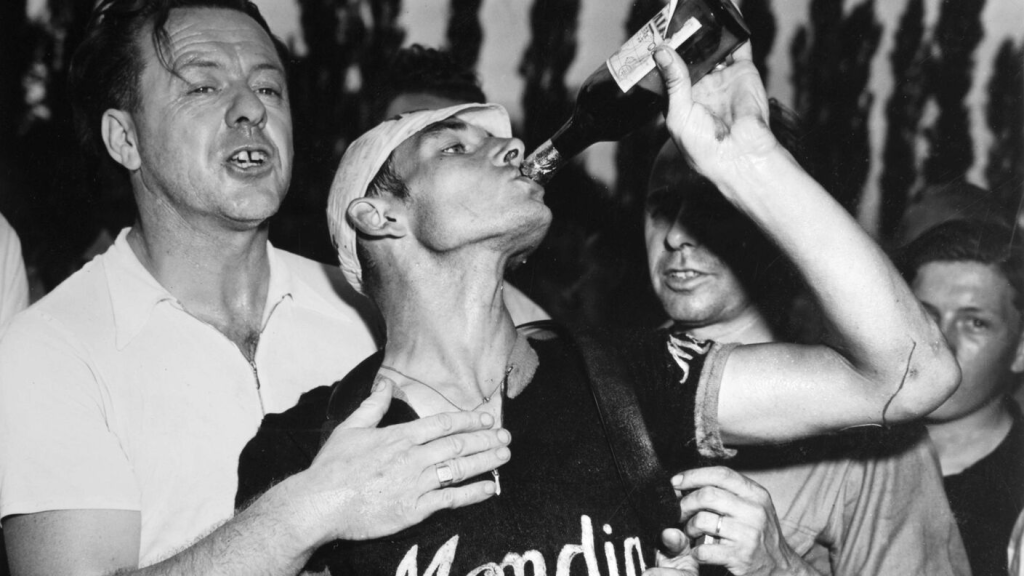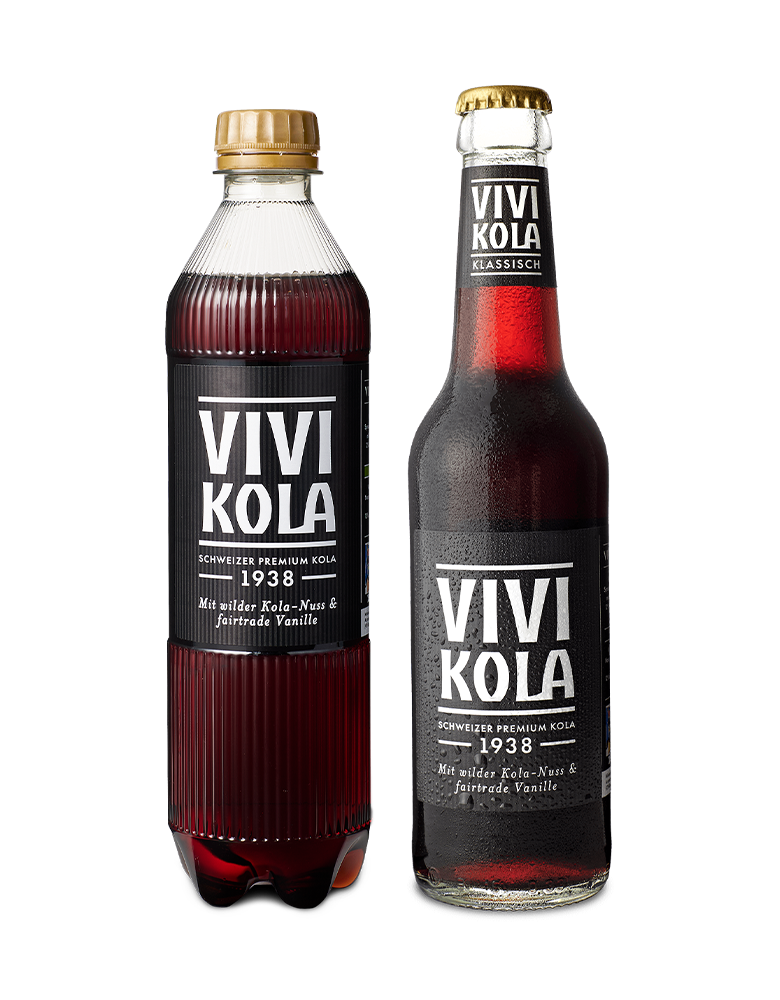Switzerland’s first cola was launched in 1938 by the company Mineralquelle Eglisau. This was maybe a reaction to Coca-Cola who had entered the Swiss market in 1936.
It was an employee at the company who developed the recipe. Real kola nut from Cameroon was used to give it flavor as opposed to synthetic additive that some cola manufactures used.
The late 1930s – it turned out – was not an ideal time to start production of a soda; With Second World War came rationing of many goods, also sugar. Vivi Kola came through, though, and even found popularity among the hundreds of thousands of Swiss soldiers who were mobilized to secure Switzerland’s neutrality.
The big breakthrough came in 1949 when Vivi Kola became the main sponsor for the annual bike race Tour de Suisse. The brand got massive exposure and the local cycling heroes of the day had a Vivi Kola at the finish line. The soft drink earned the nickname Rennfahrerbier (= bike racer beer) and became closely associated with bike racing.

The competition from the two big Americans intensified in the 1960s and the increasing struggle over market shares ended for Vivi Kola in 1986. The new owners of the brand made a deal with PepsiCo to bottle their flagship cola and therefore Vivi had to be retired.
New life in 2010
In 2005 Christian Forrer – from Vivi Kola’s hometown Eglisau – had the idea to bring back Vivi Kola. He purchased the rights to Vivi Kola and with the help of former employees, relatives, and colleagues the original recipe was recovered.
And in June 2010 Vivi Kola was back! A store was set up in Eglisau and at the opening party the store was overrun and 2.500 bottles were sold in just two hours.
Nowadays the kola is bottled at Mineralquelle Knutwil but sales and distribution still happens out of Eglisau.
Vivi Kola is still flavored with real kola nut from Cameroon.
